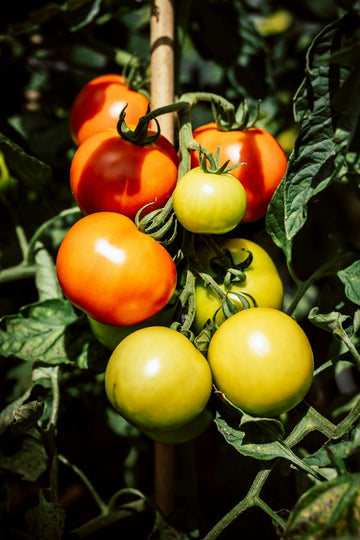When it comes to cultivating lush and thriving plants, there's more to it than just choosing the right type of plant or the perfect spot. The planter you choose to house your plants plays a pivotal role in their overall health and growth. One common question that arises in the gardening world is: should planters have drainage holes? Let's dive into this debate and uncover the significance of drainage holes in planters.
Let's Talk About Significance of Drainage Holes
Role of Drainage Holes | Pros of Drainage Holes | Addressing Concerns | Tips for Optimal Drainage | Conclusion | Planter Recommendation
The Role of Drainage Holes

Drainage holes in planters are not just a matter of preference; they play a critical role in maintaining plant health. These holes allow excess water to escape, preventing waterlogging and root rot, which are among the leading causes of plant demise. By enabling excess water to drain away, drainage holes create a balance between proper hydration and preventing drowning of plant roots.
The Pros of Drainage Holes in Planters
- Prevent Water Accumulation: Without drainage holes, water can accumulate at the bottom of the planter, leading to root suffocation and disease. Proper drainage ensures that excess water exits, keeping the soil's moisture level optimal.
- Oxygen Intake: Roots need oxygen to thrive. Adequate drainage ensures that the soil is properly aerated, allowing roots to breathe and facilitating healthy growth.
- Prevent Root Rot: Waterlogged soil can lead to root rot, a condition that is detrimental to plant health. Drainage holes help prevent this by avoiding the prolonged presence of excess moisture.
- Controlled Nutrient Levels: Proper drainage in planters helps in maintaining the right balance of nutrients in the soil. Without drainage, nutrients can become concentrated, causing nutrient burn and harming the plants.
(back to top)
Addressing Concerns
Some gardeners might worry that drainage holes lead to soil drying out too quickly. While it's true that proper drainage can promote faster evaporation, this concern can be managed by keeping a watchful eye on soil moisture levels and adjusting watering routines accordingly.
Tips for Optimal Drainage
- Select the Right Planter: When choosing a planter, opt for one with drainage holes. This is especially important for plants that are sensitive to overwatering.
- Use Well-Draining Soil: Combine well-draining soil mix with the planter's drainage holes to create an environment that prevents waterlogging.
- Add Drainage Material: Placing a layer of rocks, broken pottery, or gravel at the bottom of the planter before adding soil can further enhance drainage.
But in the recent past, people prefer to put a plastic pot with drainage holes into a container or planter that doesn’t come with drainage holes. This concept is mostly used in homes and office spaces that need to look good and for ease of maintenance. When one needs to water their plants, all they do is take the plant outside, water it and bring it back to be placed in the planter. This makes the homes less messy and easier to clean!
(back to top)
Conclusion
In the age-old debate of whether planters should have drainage holes, the verdict is clear: drainage holes are essential for the health and well-being of your plants. They ensure proper moisture levels, prevent root rot, and allow your green companions to thrive. As you embark on your gardening journey, remember that the humble drainage hole can make a world of difference in your plant's growth and vitality. So, when choosing a planter, always make sure it comes equipped with this crucial feature.
(back to top)
Recommended Planters for your Indoor Plants
Discover more planters for your Indoor Plants










 At Palasa, we believe in the seamless fusion of nature, design and humanity.
At Palasa, we believe in the seamless fusion of nature, design and humanity.